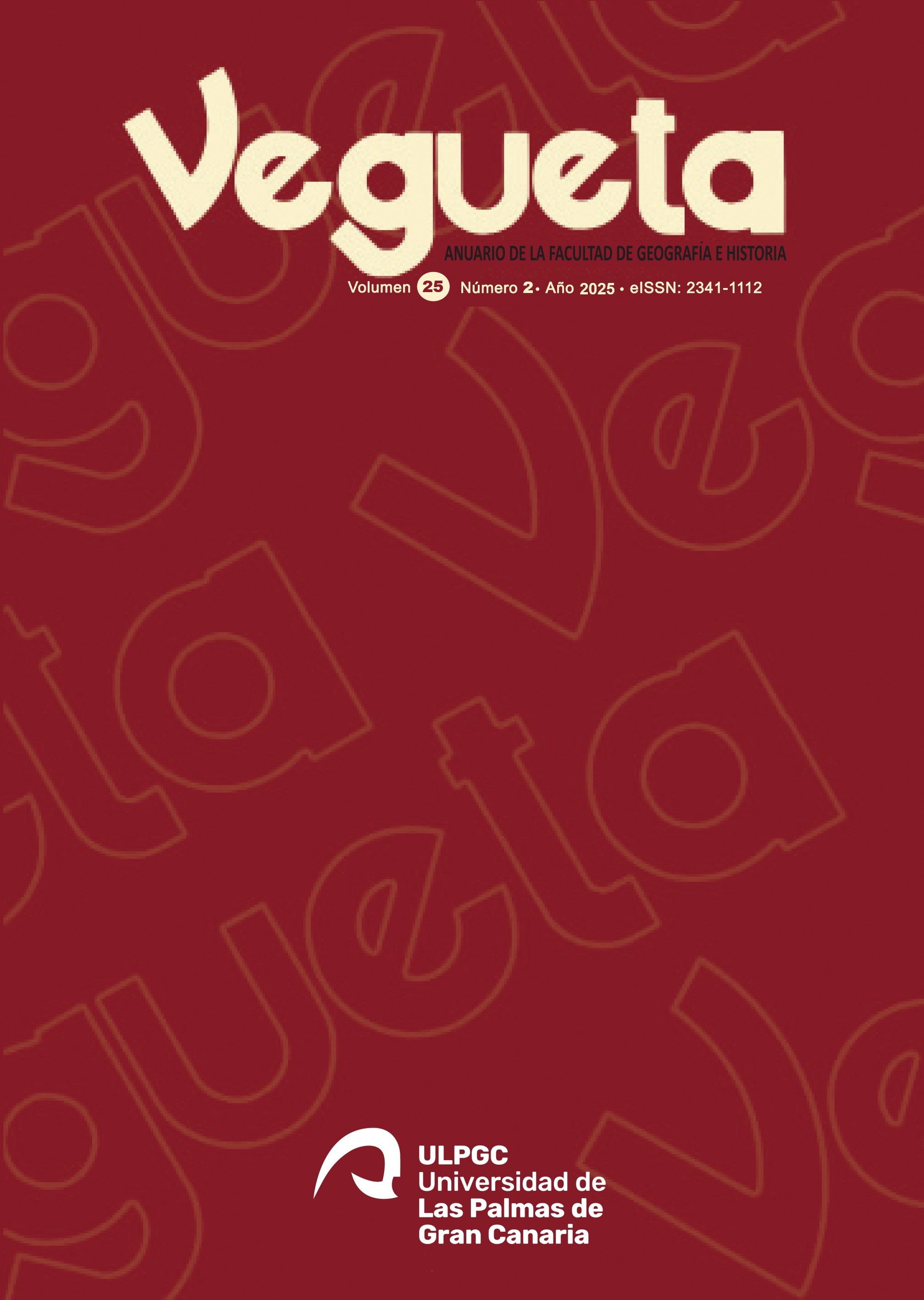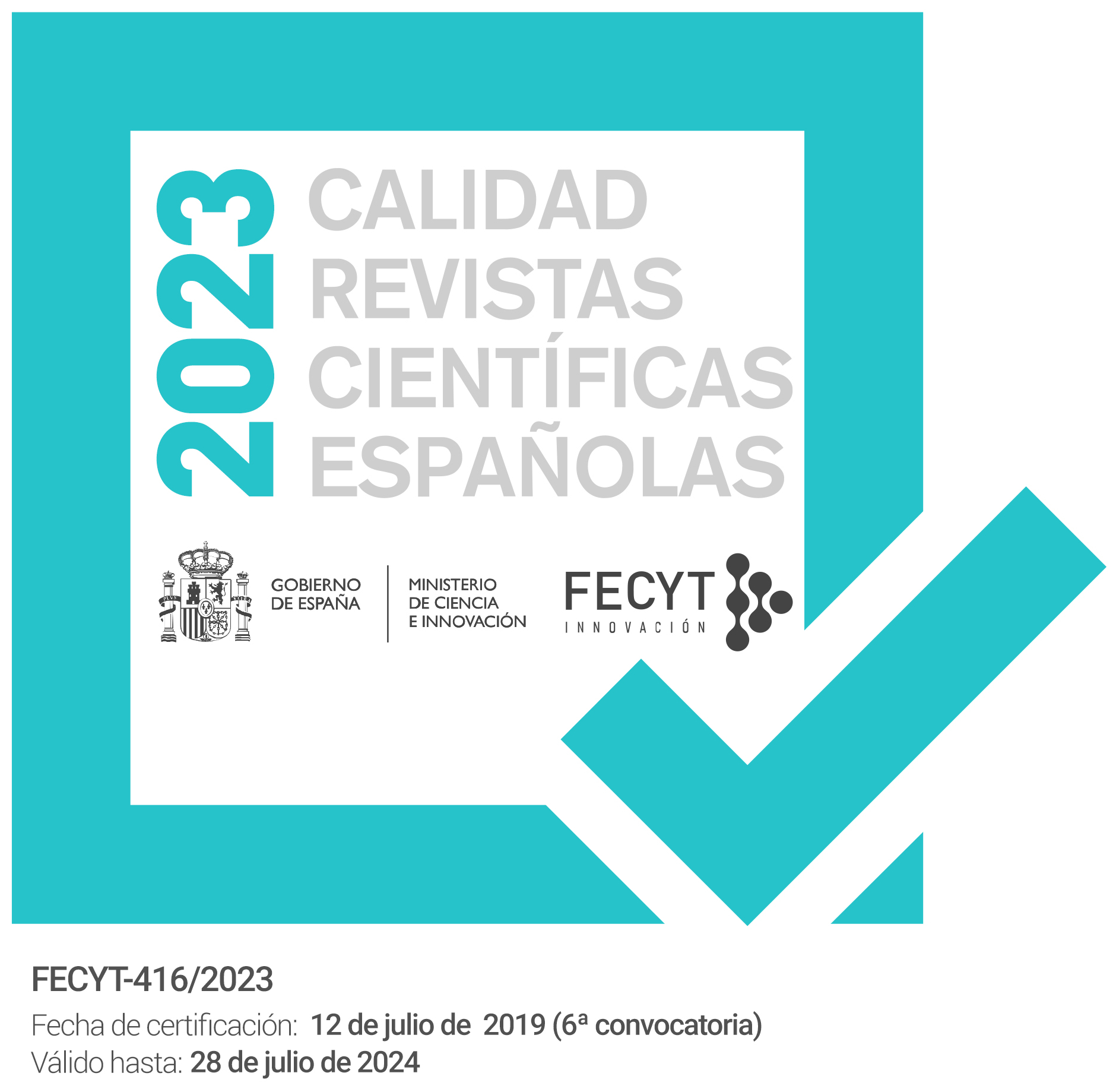Vivir con dolor crónico en las Cartas de Frontón
DOI:
https://doi.org/10.51349/veg.2025.2.16Palabras clave:
Roma imperial, Dolor crónico, Estudios de la DiscapacidadResumen
Este artículo aborda la experiencia de envejecer con dolor crónico en la Roma imperial a través de las epístolas de Frontón (s. II n.e.). Las Cartas son narrativas en primera persona de un hombre con una condición dolorosa y crónica, posiblemente gota, además de una fuente privilegiada para acercarse a la experiencia de vivir con dolor en la Antigüedad. Este trabajo analiza los síntomas y las consecuencias físicas y emocionales del dolor de Frontón, su relación con el tiempo y el espacio, los recursos médicos y asistenciales que empleó, y cómo la gota condicionó su experiencia individual y social.
Descargas
Citas
ALONSO ALONSO, M. Á. (2018): Los médicos en las inscripciones latinas de Italia (siglos II a.C. – III d.C.). Aspectos sociales y profesionales, Ediciones Universidad de Cantabria, Santander.
ARMISEN-MARCHETTI, M. (2010): Le doleur physique dans les Lettres à Lucilius de Sénèque, en P. LAURENCE y F. GUILLAUMONT (eds.), Les écritures de la douleur dan l’épistolaire de l’Antiquité à jours, Presses universitaires François-Rabelais, París: 91-112.
BOURKE, J. (2014): The Story of Pain: from prayer to painkillers, Oxford University Press, Oxford.
BOWERSOCK, G. W. (1969): Greek Sophists in the Roman Empire, Oxford University Press, Oxford.
BYL, S. (1988): Rheumatism and Gout in the Corpus Hippocraticum, L’antiquité Classique, 57: 89-102.
CAIRNS, D. (ed.) (2019): A Cultural History of Emotions in Antiquity, Bloomsbury, Londres.
CASAMAYOR MANCISIDOR, S. (2022): Libanio y la autobiografía del dolor crónico, Antigüedad y cristianismo, 39: 107-119.
CHALÈS, G.; COIFFIER, G. y ALBERT, J. D. (2017): Gota, EMC – Aparato Locomotor, 50(4): 1-21.
CHAMPLIN, E. (1974): The Chronology of Fronto, The Journal of Roman Studies, 64: 136-159.
CID LÓPEZ, R. M.; DOMÍNGUEZ ARRANZ, A. y MARINA SÁEZ, R. M. (eds.) (2021): Madres y familias en la Antigüedad. Patrones femeninos en la transmisión de emociones y de patrimonio, Ediciones Trea, Gijón.
DAVENPORT, C. y MANLEY, F. (eds.) (2014): Fronto: Selected Letters, Bloomsbury, Londres.
DE HOZ GARCÍA-BELLIDO, M. P. (2014): Lucian’s Podagra, Asclepius and Galen. The popularization of medicine in the second century AD, en L. A. GUICHARD; J. L. GARCÍA ALONSO y M. P. DE HOZ GARCÍA-BELLIDO (eds.), The Alexandrian Tradition. Interactions between Science, Religion, and Literature, Peter Lang, Berna: 175-210.
DE LUCE, J. (1989): Ovid as an Idiographic Study of Creativity and Old Age, en T. FALKNER y J. DE LUCE (eds.), Old Age in Greek and Latin Literature, State University of New York, Nueva York: 195-216.
DEL MÓNACO, R. (2015): La experiencia de padecer migraña: el análisis de narrativas como estrategia metodológica para el estudio de este dolor crónico, Revista Latinoamericana de Metodología de la Investigación Social, 9: 22-35.
DOWNIE, J. (2017): The Experience and Description of Pain in Aelius Aristides’ Hieroi Logoi, en J. Z. WEE (ed.), The Comparable Body. Analogy and Metaphor in Ancient Mesopotamian, Egyptian, and Greco-Roman Medicine, Brill, Leiden-Boston: 247-274.
DRAYCOTT, J. (2019): Roman Domestic Medical Practice in Central Italy. From the Middle Republic to the Early Empire, Routledge, Nueva York.
ELLIOTT, S. (2020): The Rustle of Paul. Autobiographical Narratives in Romans, Corinthians, and Phillippians, T&T Clark, Londres.
FERNÁNDEZ, C. N. (2021): Las emociones en la Antigüedad: indignación y envidia en Aristóteles y Aristófanes, Circe de clásicos y modernos, 25: 75-98.
FLEMMING, R. (2001): Making the Roman Women: Gender, Nature, and Authority from Celsus to Galen. Oxford University Press, Oxford.
FLEURY, P. (2012): Marcus Aurelius’ Letters, en M. VAN ACKEREN (ed.), A Companion to Marcus Aurelius, Blackwell, Oxford: 62.76.
FRANK, A. W. (1995): The Wounded Storyteller. Body, Illness, and Ethics, The University of Chicago Press, Chicago.
GILMORE, L. (2021): Agency without mastery: Chronic pain and posthuman life writing, Biography, 35: 83-98.
GONZÁLEZ-POLLEDO, E. y TARR, J. (2016): The thing about pain: The remaking of illness narratives in chronic pain expressions on social media, New media & society, 18: 1455-1472.
GUIOTE GONZÁLEZ, A. (2012): Arteterapia y Fibromialgia: Las Resistencias del Dolor, Arteterapia: Papeles de arteterapia y educación artística para la inclusion social, 7: 261-278.
HAINES, C. R. (1919): The Correspondence of Marcus Cornelius Fronto, Loeb, Londres-Nueva York.
HONKASALO, M. L. (1998): Space and Embodied Experience: Rethinking the Body in Pain, Body & Society, 4: 35-57.
JURECIC, A. (2012): Illness as Narrative, University of Pittsburgh Press, Pittsburgh.
KAFER, A. (2013): Feminist, Queer, Crip, Indiana University Press, Bloomington.
KING, D. (2018): Experiencing Pain in Imperial Greek Culture, Oxford University Press, Oxford.
LEÓN FERNÁNDEZ, M. (2007): La poesíaterapia: enfrentando y manejando el dolor, ABRA, 36: 169-182.
MARTÍNEZ SAURA, F. (1994): Frontón: la enfermedad en el siglo II, Gerión, 12: 103-111.
MATTERM, S. P. (1999): Physicians and the Roman Imperial Aristocracy: The Patronage of Therapeutics, Bulletin of the History of Medicine, 73: 1-18.
MÉNDEZ DE LA BRENA, D. E. (2022): Estados mórbidos. Desgaste corporal en la vida contemporánea, Kaotika Libros, Madrid.
MOMMSEN, T. (1874): Die chronologie der Briefe Frontonis, Hermes, 8: 198-216.
PALACIOS MARTÍN, Á. (1992): Frontón. Epistolario, Gredos, Madrid.
PETRIDOU, G. (2018a): Laughing Matters: Chronic Pain and Bodily Fragmentation in Lucian’s Podagra, Illinois Classical Studies, 43: 488-506.
PETRIDOU, G. (2018b): The Curious Case of Aelius Aristides. The Author as Sufferer and Illness as ‘Individualizing Motif’, en E. M. BECKER y J. RÜPKE, Autoren in religiösen literarischen Texten der späthellenistischen und der frühkaiserzeintlichen Welt, Mohr Siebeck, Tubinga: 199-220.
PETRIDOU, G. (2021): ‘There is pain -so utter-’. Narrating chronic pain and disability in antiquity and modernity, en E. ADAMS (ed.), Disability Studies and the Classical Body. The Forgotten Other, Routledge, Londres: 66-87.
PRICE, M. (2015): The Bodymind Problem and the Possibilities of Pain, Hypatia, 30: 268-284.
RHEE, H. (2022): Illness, Pain, and Health Care in Early Christianity. Wm. B. Eerdmans Publishing Co., Grand Rapids.
RICHLIN, A. (2011): Parallel lives: Domitia Lucilla and Cratia, Fronto and Marcus, EuGeStA, 1: 163-203.
SAMAMA, E. (2003): Les médicins dans le monde grec: sources épigraphiques sur la naissance d’un corps médical. Libraire Droz, Ginebra.
SAMELLAS, A. (2015): Public Aspects of Pain in Late Antiquity: The Testimony of Chrysostom and the Cappadocians in their Graeco-Roman Context, ZAC, 19: 260-296.
SCARBOROUGH, J. (1969): Roman Medicine, Thames and Hudson, Londres.
SCHOTT, G. D. (2004): Communicating the experience of pain: the role of analogy, Pain, 108: 209-212.
SHEPPARD, E. (2020): Chronic Pain as Emotion, Journal of Literary & Cultural Disabilities, 14: 76-81.
TAOKA, Y. (2013): Liminal Women in Fronto’s Letters, The Classical Journal, 108: 419-445.
TRAWALTER, S.; HOFFMAN, K. M. y WAYTZ, A. (2012): Racial Bias Perceptions of Other’s Pain, PLOS ONE, 7: 1-8.
VAN DEN HOUT, M. P. J. (1999): A Commentary on the Letters of M. Cornelius Fronto, Brill, Leiden.
WENDELL, S. (1996): The Rejected Body. Feminist Philosophical Reflections on Disability, Routledge, Londres.
WHITEHORNE, J. E. G. (1977): Was Marcus Aurelius a Hypochondriac?, Latomus, 36: 413-421.
WILSON, N. (2013): The Semantics of Pain in Greco-Roman Antiquity, Journal of the History of the Neurosciences: Basic and Clinical Perspectives, 22: 129-143.
ZURHAKE, L. (2020): Chronic Pain and Illness. Pain and Meaning: Interpreting Chronic Pain and Illness in Greco-Roman Antiquity, en C. LAES (ed.), A Cultural History of Disability in Antiquity, Bloomsbury, Londres: 57-66.
Descargas
Publicado
Número
Sección
Licencia
Derechos de autor 2025 Sara Casamayor Mancisidor

Esta obra está bajo una licencia internacional Creative Commons Atribución-NoComercial-SinDerivadas 4.0.




